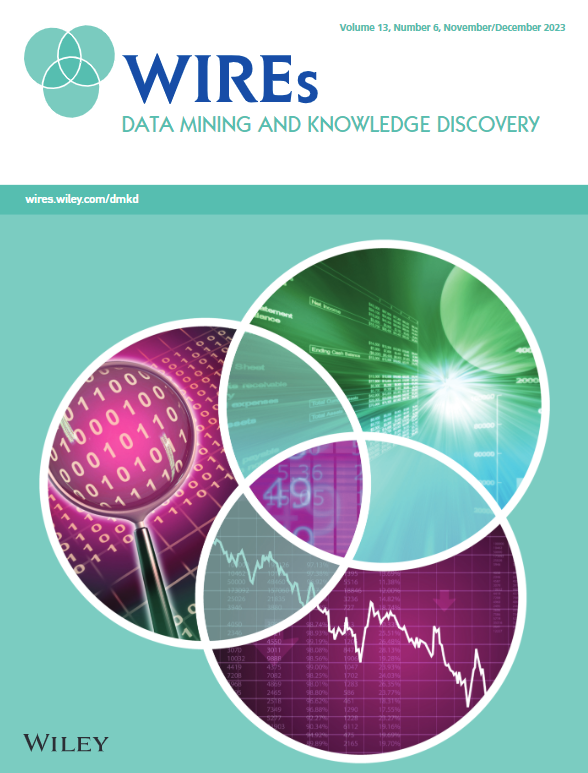生成高维离散数据集的机器学习方法
IF 11.7
2区 计算机科学
Q1 COMPUTER SCIENCE, ARTIFICIAL INTELLIGENCE
Wiley Interdisciplinary Reviews-Data Mining and Knowledge Discovery
Pub Date : 2022-01-18
DOI:10.1002/widm.1450
引用次数: 2
摘要
新兴大数据和机器学习应用的平台和技术的发展需要真实生活数据集的可用性。一种可能的解决方案是使用两步方法合成反映真实数据模式的数据集:首先,分析真实数据集X以获得相关模式Z,然后使用这些模式重建保留X主要特征的新数据集X '。本研究探讨了两种可能的方法:(1)基于约束的生成和(2)概率生成建模。前者是使用逆挖掘(IFM)技术设计的,包括生成一个满足给定支持约束的数据集,这些约束是输入集的项目集,通常是频繁的项目集。相比之下,对于后一种方法,探索了概率生成建模(PGM)的最新发展,该模型将生成作为参数分布的采样过程,通常编码为神经网络。对这两种方法进行了比较,概述了离散数据的实例化,并讨论了它们的优缺点。本文章由计算机程序翻译,如有差异,请以英文原文为准。
Machine learning methods for generating high dimensional discrete datasets
The development of platforms and techniques for emerging Big Data and Machine Learning applications requires the availability of real‐life datasets. A possible solution is to synthesize datasets that reflect patterns of real ones using a two‐step approach: first, a real dataset X is analyzed to derive relevant patterns Z and, then, to use such patterns for reconstructing a new dataset X′ that preserves the main characteristics of X . This survey explores two possible approaches: (1) Constraint‐based generation and (2) probabilistic generative modeling. The former is devised using inverse mining ( IFM ) techniques, and consists of generating a dataset satisfying given support constraints on the itemsets of an input set, that are typically the frequent ones. By contrast, for the latter approach, recent developments in probabilistic generative modeling ( PGM ) are explored that model the generation as a sampling process from a parametric distribution, typically encoded as neural network. The two approaches are compared by providing an overview of their instantiations for the case of discrete data and discussing their pros and cons.
求助全文
通过发布文献求助,成功后即可免费获取论文全文。
去求助
来源期刊

Wiley Interdisciplinary Reviews-Data Mining and Knowledge Discovery
COMPUTER SCIENCE, ARTIFICIAL INTELLIGENCE-COMPUTER SCIENCE, THEORY & METHODS
CiteScore
22.70
自引率
2.60%
发文量
39
审稿时长
>12 weeks
期刊介绍:
The goals of Wiley Interdisciplinary Reviews-Data Mining and Knowledge Discovery (WIREs DMKD) are multifaceted. Firstly, the journal aims to provide a comprehensive overview of the current state of data mining and knowledge discovery by featuring ongoing reviews authored by leading researchers. Secondly, it seeks to highlight the interdisciplinary nature of the field by presenting articles from diverse perspectives, covering various application areas such as technology, business, healthcare, education, government, society, and culture. Thirdly, WIREs DMKD endeavors to keep pace with the rapid advancements in data mining and knowledge discovery through regular content updates. Lastly, the journal strives to promote active engagement in the field by presenting its accomplishments and challenges in an accessible manner to a broad audience. The content of WIREs DMKD is intended to benefit upper-level undergraduate and postgraduate students, teaching and research professors in academic programs, as well as scientists and research managers in industry.
 求助内容:
求助内容: 应助结果提醒方式:
应助结果提醒方式:


